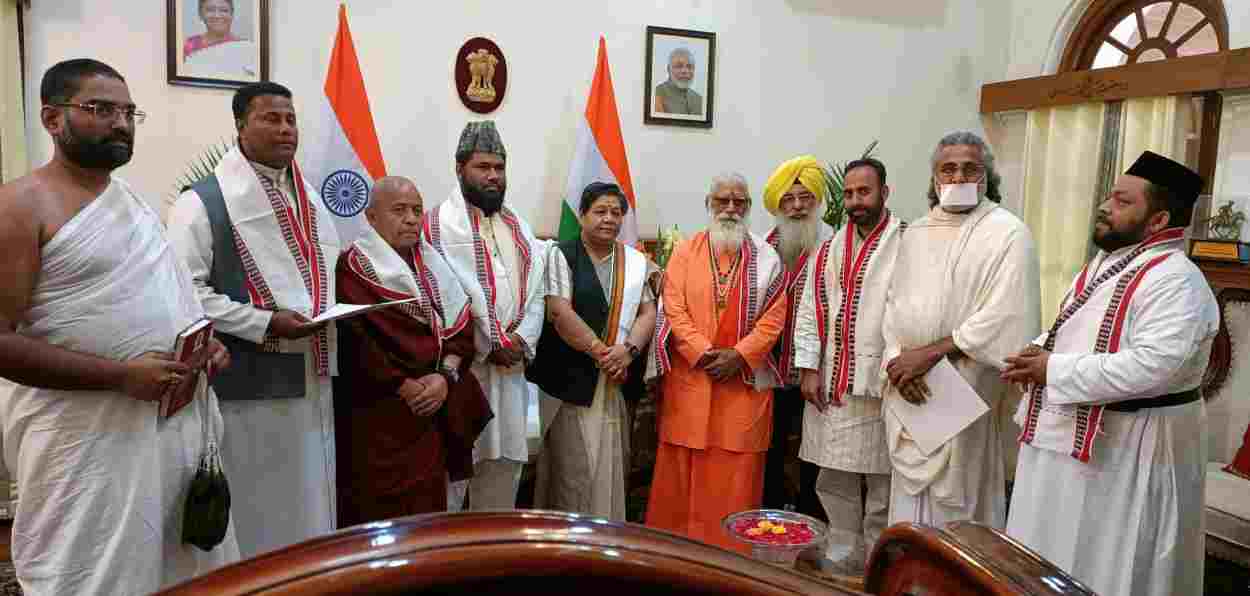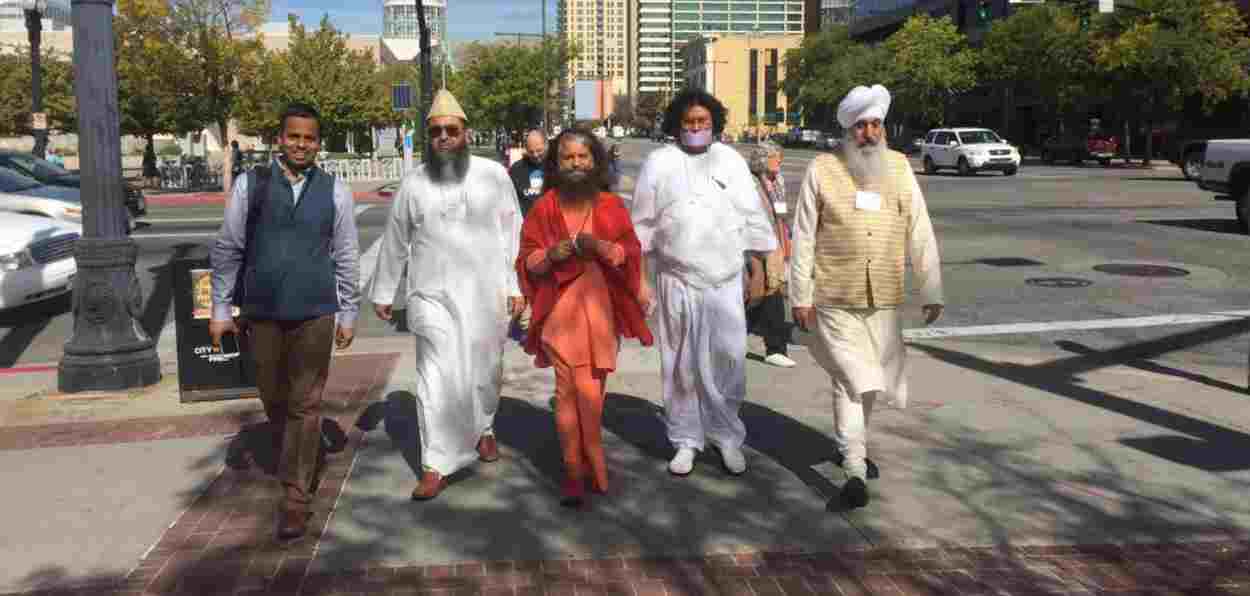
Amir Suhail Wani
Some 400 years ago, Mughal Prince Dara Shikoh spoke of the internal unity between the Upanishads and the Quran in his book “The Meeting of Oceans”(Marajul Bahrain). Dara was uncovering the deeper parallels that exist between the Islamic mystic tradition of Sufism and the Indian mystical stream of Advaita Vedanta.
Scholars have traced the convergences between different spiritual traditions of the world and the good news is that there are more commonalities among religious traditions than the differences. Religions may differ in their outer form and historic manifestations, but in their esoteric and internal dimensions, all converge at the same truth, same unity, and same spiritual beatitude. Men of wisdom, sages and saints, scholars and seers, from all cultures and climes, have tried to dawn upon men the hidden and internal unity of religions and spiritual traditions and forgo their external divergences.
The external forms of religions are like dresses and languages, cultures and traditions, characterizing mankind in different space-time contexts – they differ and vary from person to person, region to region. But the essence and spirit of religion like that of the essence and spirit of culture and tradition is homogeneous and uniform.
One of the tragedies of modern times has been the devaluation of symbols and the loss of religious symbolism. People have become used to the banal and literalist interpretation of religious doctrines, religious texts, and religion itself. This has not only led to the decline of genuine understanding but has more tragically given birth to militant piety, radicalism, and inter-faith schism. Therefore, to understand religion and to harvest the fruits of a religious worldview, one of the primary tasks is to restore the true meaning of religious symbols and to avoid tendencies of the superficial reading characterizing the modern mind.
 Leaders of different religions from Indian
Leaders of different religions from Indian
We start with the most apparent differences occurring between Hinduism and Islam and see how they resolve with a slight change in perspective. It is said that Islam emphasizes the unity of God and exhorts its followers to worship none but him alone. On the other hand, it is said that Hinduism is characterized by a pantheon of deities and is presumably a polytheistic creed. However, a deeper scrutiny reveals that this is a superficial understanding of the subject.
On deeper scrutiny, one comes across similarities of stimulating and enlightening nature. In Islam, besides the essence, God also has attributes (Sifat) such as listening, seeing, knowing, and the like. In Hinduism, these attributes (Sifat) become embodied and come across as Vishnu, Shiva, Ram, Krishna, etc.
It is acknowledged, even by the scholars of Hinduism that the ultimate reality is one, indivisible, incomprehensible, and eternal – the being called Brahm. Brahm is the unifying principle behind different manifestations and phenomena that make themselves manifest in the cosmic landscape. Thus, we have the notions of Seguna and Nirgun Brahm, bringing it further closer to the Islamic notion of Allah, the Greek concept of Logos, the Judaic concept of Yahweh, the Christian concept of Godhead and the Buddhistic concept of Boddhisatva. Thus at the heart of each religion is a concept of transcendent and pure monism, but it takes on different forms in different cultures and climes to the effect of different appearances.
Here’s a more striking and deeper parallelism to be noted. Sri Aurobindo, the noted scholar of Indian philosophy and a philosopher of repute in his own right opines that the different deities referred to in the Vedas are nothing more than different aspects of the self. This is in absolute sync with Ibn Arabi’s view that the attributes (Sifat) of God mentioned now and then in the Quran and Ahadith are different manifestations of the Lord, the high as they pertain to the human soul.
The Quran is candid and explicit in its Catholicism and universalization of salvation. Many verses in the Quran cut straight at the heart of the monopoly of salvation and the limiting of guidance to the few. Quran not only espouses the idea that each religion embodies salvation and guidance, but it also emphasizes, in more than one place, that different religions are just the outer manifestations of one underlying unity. Some verses of the Quran to this effect are in order.
“O mankind, indeed we have created you from male and female and made you peoples and tribes that you may know one another. Indeed, the most noble of you in the sight of Allah is the most righteous of you. Indeed, Allah is Knowing and Acquainted”. (49:13)
“Humanity was once nothing but a single community ˹of believers˺, but then they differed. Had it not been for a prior decree from your Lord, their differences would have been settled at once” (10:19)
“We believe in Allah and what was revealed to us and what was revealed to Abraham and Ishmael and to Issac and Jacob and his descendants, and the teachings which Allah gave to Moses and Jesus and to other Prophets. We make no distinction between any of them and to Him do we submit”. (3:84)

Symbols of different religions
They say: “None shall enter the Garden unless he is a Jew or (according to the Christians), a Christian.” These are their vain desires. Say: “Bring your proof if you are speaking the truth.”(None has any special claim upon reward from Allah.) Whoever submits himself completely to the obedience of Allah and does good will find his reward with his Lord. No fear shall come upon them, nor shall they grieve (2:111-112)
One can go on producing verses from the Quran, from the sayings of the Prophet and the quotations of sages and mystics from both Islam and Hinduism to bring forth the fact in the essence of things, religions are not in conflict with one another but are simply different flowers of the same garden. The lives of sages like Kabir, Nanak, Rumi, Ramakrishna Paramahansa, and Swami Vivekananda are ample testimony to the transcendental unity of religions. Religious preachers from various religions must press upon their followers that no one religion can claim absolute monopoly or monarchy over truth and salvation. Inter-faith dialogue and ecumenical theology is the need of the hour both globally and in countries like India which represent supreme exemplars of religious diversity and spiritual multiculturalism.
ALSO READ: Syed Ashraf Kichhouchhwi and his AIUMB fight radicals who bring disrepute to Islam
Inter-faith dialogue can’t be built around the premise of proving one’s religion truer than that of the other and pointing out lacunae in other religions. Inter-faith dialogue has to base itself on the desire of understanding deeply about other religions to behold their beauty and truth. Inter-faith dialogue has to awaken us to the possibility of different forms as they manifest in different religions as the terrestrial sprouting of one divine truth. A band of scholars, who identify themselves as Perrenialists, are rendering valuable service in bringing different religions together. This band includes, but is not limited to charismatic scholars like Rene Guenon, Ananda Comaraswamy, Martin Lings, Frithjof Schuon, Syed Hossein Nasr, and others. These scholars have arrived at a synthesis that is both spiritually awakening and acts as a deterrent against the attitudes of religious chauvinism. The fact remains that these are our modern-day sages and it reminded us that sages and seers have always espoused the values of pluralism, multiplicity, and brotherhood.
